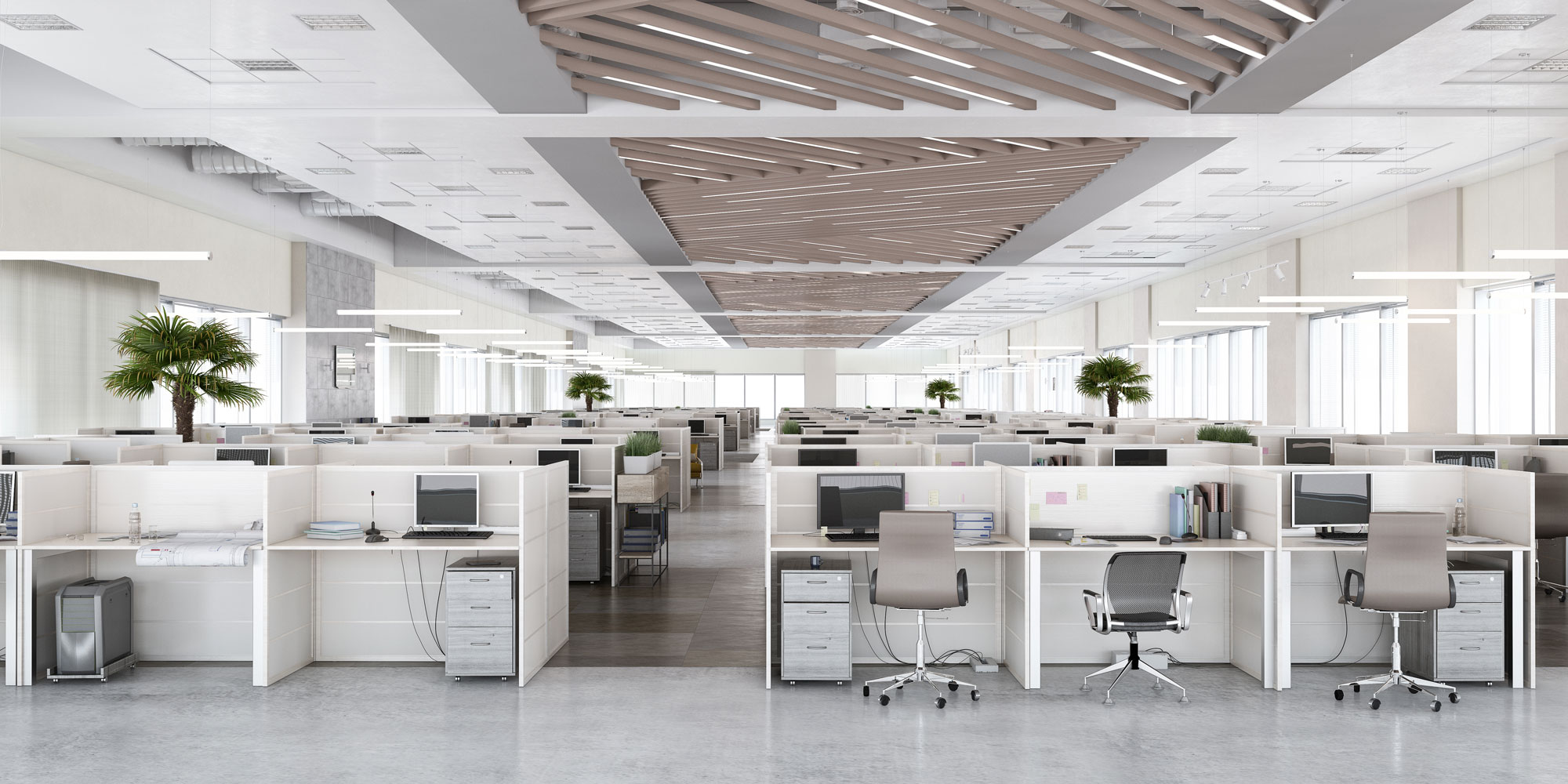Commercial space planning is the strategic process of designing workspaces that maximize employee productivity, satisfaction, and operational efficiency. For businesses seeking to optimize performance while accommodating diverse work styles, thoughtful space planning has become essential in today’s evolving workplace landscape.
How Does Office Design Impact Workplace Productivity?
Research demonstrates that workspace design directly influences employee productivity through multiple pathways:
- Distraction reduction: Well-designed spaces minimize interruptions and wasted time
- Collaboration enhancement: Strategic layouts foster innovation and teamwork
- Employee wellbeing: Ergonomic environments reduce absenteeism and support focus
- Work style accommodation: Flexible spaces support diverse tasks and preferences
- Culture reinforcement: Physical environments reflect and strengthen company values
High-performing organizations recognize that strategic workspace investments yield measurable returns through enhanced employee performance.
What Is Flexible Zoning in Office Design?
Flexible zoning creates distinct areas that support different work modes throughout the day. Effective zoning includes:
- Focus zones: Distraction-free environments with acoustic barriers for concentrated work
- Collaboration spaces: Reconfigurable areas with movable furniture for team interaction
- Social hubs: Casual environments that facilitate relationship building and creative exchange
- Learning environments: Dedicated spaces for knowledge transfer and skill development
This activity-based approach maximizes space utilization while accommodating varied work preferences.
How Should Office Layouts Be Spatially Configured for Maximum Productivity?
Strategic spatial configuration influences workflow efficiency and team dynamics through:
- Proximity planning: Positioning frequently collaborating teams near each other
- Intuitive wayfinding: Creating clear navigation paths that minimize unnecessary movement
- Open/private balance: Combining collaborative areas with concentrated work spaces
- Acoustic management: Establishing appropriate workstation spacing to control noise transfer
- Traffic pattern optimization: Designing movement flows that minimize disruption
Professional workplace strategists analyze operational patterns to create layouts that enhance organizational efficiency.
Why Are Ergonomics Crucial in Productive Office Environments?
Ergonomic excellence directly impacts productivity and health outcomes through:
- Adjustable workstations: Height-variable desks that accommodate sitting and standing
- Equipment positioning: Properly aligned monitors and input devices to prevent strain
- Task lighting: Adjustable illumination that reduces eye fatigue
- Acoustic solutions: Sound management systems that control noise levels
- Climate control: Optimized temperature and ventilation systems for comfort
Ergonomic investments reduce physical strain, decrease absenteeism, and support sustained cognitive focus.
How Does Technology Integration Enhance Workspace Functionality?
Seamless technology integration enables productivity through:
- Universal connectivity: Reliable network access throughout all work environments
- Audiovisual solutions: Integrated systems for efficient communication and collaboration
- Cable management: Organized power and data delivery that reduces visual clutter
- Resource scheduling: Digital systems for managing shared spaces and equipment
- Environmental automation: Smart building technologies for optimal comfort control
When technology functions intuitively, employees can focus on value-creating activities rather than technical troubleshooting.
What Role Does Biophilic Design Play in Workplace Productivity?
Biophilic elements that connect workers to nature demonstrably enhance cognitive function through:
- Natural light: Window placement and interior glazing that maximize daylight penetration
- Living elements: Strategic placement of plants and living walls to improve air quality
- Natural materials: Incorporation of wood, stone, and other organic textures
- Visual connections: Sightlines to outdoor environments when possible
- Water features: Appropriate incorporation of water elements in certain settings
These natural connections reduce stress levels while improving concentration and creative thinking.
What Process Should Organizations Follow for Effective Space Planning?
Successful commercial space implementation follows this structured approach:
- Assessment phase: Evaluate current workflow patterns, pain points, and future business objectives
- Strategic planning: Develop conceptual designs aligned with organizational goals
- Detailed design: Create comprehensive space plans with furniture and equipment specifications
- Implementation management: Coordinate construction, furniture installation, and technology deployment
- Change support: Facilitate employee transition to new workspace configurations
- Performance evaluation: Measure outcomes and implement refinements as needed
This systematic process ensures workspace investments deliver measurable improvements in organizational performance.
How Can Businesses Measure ROI on Workspace Investments?
Forward-thinking organizations track these key metrics to evaluate workspace effectiveness:
- Productivity measurements: Output metrics compared to pre-implementation baselines
- Space utilization: Occupancy and usage patterns across different workspace zones
- Talent metrics: Recruitment success rates and employee retention statistics
- Operational costs: Energy consumption and maintenance requirements
- Employee experience: Satisfaction scores and engagement measurements
These data points provide quantifiable evidence of workspace investment returns.
Why Partner With Workplace Experts for Commercial Space Planning?
BMS Commercial Services delivers comprehensive workplace solutions through:
- Strategy development: Aligning workspace design with business objectives
- Space planning: Creating efficient, productive layout solutions
- Furniture procurement: Selecting and installing appropriate furnishings
- Move management: Coordinating relocation logistics with minimal disruption
- Ongoing support: Providing adaptability as business needs evolve
By leveraging BMS Commercial Services’ expertise, organizations create productivity-enhancing environments that adapt to evolving business needs while maximizing their real estate investments.
How Does Strategic Space Planning Create Competitive Advantage?
Strategic commercial space planning represents a significant opportunity for businesses to enhance productivity, foster innovation, and support employee wellbeing. By implementing research-based design principles and partnering with experienced workplace solutions providers like BMS Commercial Services, organizations create environments that deliver competitive advantage through improved performance and operational efficiency.
For more information on how BMS Commercial Services transforms workspaces for enhanced productivity, contact our workplace solutions team today!





